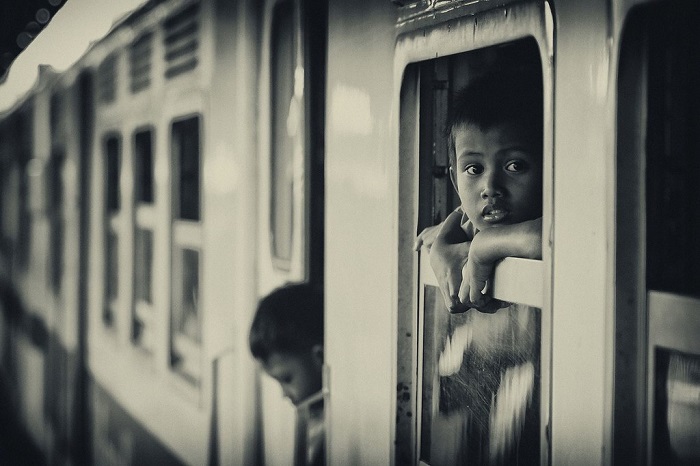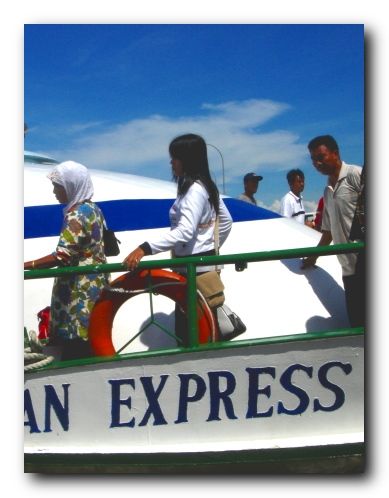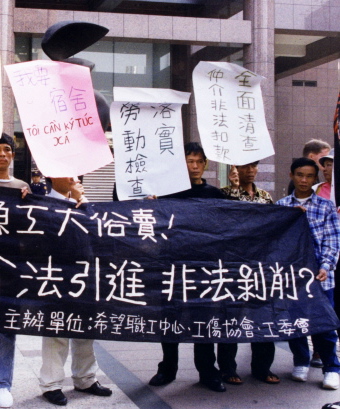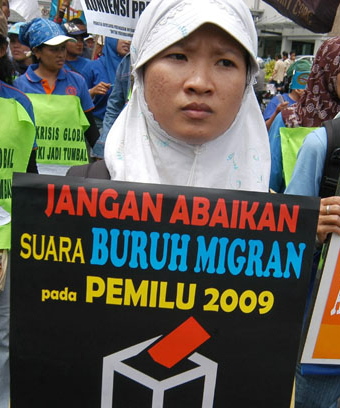Mudik forms a bogus redemption for many precarious workers amid a lack of decent jobs in both rural and urban areas
Muhtar Habibi
Every year leading up to Idul Fitri, or Eid, millions of workers in Jakarta return to their hometowns to celebrate one of the most important days in the Islamic calendar with their families. While this practice is not a specifically Indonesian expression of Islam (other countries like Malaysia, Pakistan, Bangladesh experience a similar phenomenon), in the largest Muslim-majority country in the world it does reveal some of the most pressing social issues.
On this journey, known as mudik, the relatively well-off can afford to fly or at least drive in the privacy of their own car. Others choose comfortable public transportation like executive class trains or buses.
Many millions more, however, who cannot afford comfortable transportation and who want to save money must risk their lives riding a motorcycle with their family. Every year, traffic accidents involving motorcycles in the two weeks of mudik are the most common. In 2017, from 3168 traffic accidents, in which 742 people died, 74 per cent involved motorcycles. Many riders carry their families on overloaded vehicles for hundreds of kilometres along busy, crowded and poorly maintained roads.
While the government warns of the high risk of travelling by motorcycle, for riders like Sastro, a 31 year old who travels 300 kilometres with his wife and their infant from Jakarta to Brebes in Central Java, financial stresses mean there is no other choice: ‘It is a hard journey, it is indeed. But what can we do?’
The working class prioritise spending as little money as possible and having a few days in their hometown with family and relatives. After a year of hard work, the prospect of leaving behind their harsh life in a big city, even if only for a few days, and spending time with their loved ones brings immeasurable pleasure. During Eid, workers from the city also take the opportunity to share with their relatives and neighbours the results of their work. Research by the think tank Indonesia Development and Islamic Studies (IDEAS) reveals that from a total of Rp.184 trillion (A$18.5 billion) circulated during mudik in 2016, around Rp.60 trillion was spent in rural areas.
They might be street vendors or parking attendants, domestic workers or construction workers, or in other casual jobs in the city, but they appear their best at Eid celebrations, just once a year. Gifting their parents and siblings as much as they can, bringing the best food they can from the city, and wearing their best clothes is an important part of the Eid ritual. The day provides some redemption after a year of toil.

After Eid passes, however, many workers are anxious about the idea of going back to their lives in the city. Some are upset that the rural economy does not offer a real alternative. Karyadi is 46 years old and rides every year to Indramayu in West Java with his wife. ‘Of course,’ he explained,‘I would rather work in my own hometown than jostle in Jakarta. But, employment opportunities in Indramayu are rare.’
Some worry about the cost of returning to Jakarta because their savings have run out in their efforts to carry out all the rituals of Eid. Others find it hard to leave their young children in the care of grandparents, whilst also knowing they could not bear to bring their children to Jakarta. For the workers, this is a rather bogus redemption indeed.
Cycles of labour migration
In Pramoedya Ananta Toer’s short story classic Tales from Djakarta (1957), Capital is portrayed as a silent witness to the failure of the Independence revolution to bring fundamental social change in the 1950s. Today, Jakarta appears to be witnessing the unfulfilled promises of modernisation and the developmental model introduced under Suharto. Circular migration involving Jakarta, of which mudik is one form, marks the pursuit of survival between rural life and the city that has gone on for over three decades.
The dynamics of circular migration have been shaped by government interventions in rural and urban areas overtime. In the early New Order period, government intervention in rural development prioritised modernisation of agriculture, to boost productivity, causing rising inequality and excluding large numbers of rural families from land access. Suharto was attracted to the idea that the city would absorb workers displaced from the countryside. It turns out, however, the growth of a city like Jakarta fails to provide adequate decent jobs in its urban areas. The bulk of workers in Jakarta are still employed in the informal economy and in precarious conditions. Formal employment such as clerical and factory work, furthermore, has also become increasingly precarious since the inception of labour market flexibility in the early 2000s.
This false promise of the city rests on the myth that market-driven urban development automatically provides enough decent jobs to absorb surplus labour from the countryside. In the post-war period until the 1970s, state-led industrialisation delivered on this promise in some East Asian countries. However, this model was replaced in the mid 1980s by market-led industrialisation promoted by pro-market agencies like the World Bank. Since the economic crisis in 1998, this has proved to be a disaster in Indonesia as it has brought a premature de-industrialisation.
A further shift in the World Bank’s approach is their advocating the development of micro-credit and self-help activities, mostly in the urban informal economy. This assumes that individuals can prosper as long as they are given the ‘right assistance’ in the realm of market competition. Not only does this assumption ignore the unequal access people have to programs, but, more importantly, it perpetuates disadvantage for informal workers who are generally less economically productive than formal employees. They receive very limited social protections, and no guarantee of fundamental workers’ rights. In 2015, the International Labour Organisation (ILO) concluded that around 58 per cent of Indonesia’s work force were categorised as precarious workers, mostly in informal employment.

Due to the failure to provide sufficient jobs in the city, the government is showing its interest (again) in the countryside. Since 2015, under Dana Desa, or the Village Fund Program, tens of trillions of rupiah has been transferred to more than seventy thousand villages across the country. Each village receives from Rp.100 million to more than Rp.1 billion per year. The expectation is that the money will be harnessed to support village development. Some is intended to go towards social empowerment and other programs, but the main priority is physical infrastructure.
Village development
This intervention, unfortunately, rests on yet another myth. Policy makers and some civil society activists who promote the program still believe there is a ‘harmonious community’ in the village that helps each other to achieve common prosperity for all. However, for those of us who carry out research at the village level, it is clear that in reality a small elite group accumulates economic, social and political power, dominating the village economy (land ownership and non-farm business) and occupying leadership positions. For example, it is common knowledge that hundreds of millions, and sometimes billions of rupiah is spent on election campaigning to become village head.
On the other hand, a landless labouring class has been pushed out from the village because there are no opportunities left for them. Under both the Susilo Bambang Yudhoyono and Joko Widodo administrations, government land certification measures have focused only on providing a secure land title to the landowner, and does not deal with the problem of unequal land ownership.
With these extremely unequal power relations in the village, who really benefits from the huge inflow of money? The Musyawarah Desa (Village General Assembly) is no more than a formality for getting the village head’s development proposal approved. And the authority of the Badan Permusyawaratan Desa (Village Consultative Board, BPD), the potential watchdog body in the village, is essentially limited to requesting information from and sharing opinions with the village head. More significantly, since the village head appoints the committee that chooses prospective BPD candidates, they can basically choose BPD candidates.
These village elites do not, of course, suffer the harsh struggle that the urban working class does in visiting their hometown or village once a year. Nor do they experience the anxiety those workers do when they have to return to the city after Eid ends.
All that is left for hard-working labour is spurious annual redemption achieved by risking their lives during mudik, going to and from their rural homes. These workers struggle to survive in precarious jobs in a system created and reproduced by a development model that treats the market as a silver bullet for all developmental problems; a model that hesitates to see unequal power relations as a starting point for social intervention.
The wrong prescription of medication for a physical illness may serve only to aggravate the disease. Likewise, rather than deliver redemption for workers, the continued prescription of this development model serves only to increase the already large number of workers in precarious employment and perpetuate the model’s mythical promise of redemption. What workers need are decent jobs, in both rural and urban areas. There will be no real redemption for workers until the failure of this approach is acknowledged and this development model is buried.
Muhtar Habibi (habibi.muhtar@gmail.com) is a PhD student in Development Studies at the School of Oriental and African Studies (SOAS), University of London. He is a also researcher at the Faculty of Social and Political Sciences, Universitas Gadjah Mada Yogyakarta. His research focuses on labour and agrarian change in Indonesia. His recently published (with Benny H Juliawan) ‘Creating Surplus Labor: Neo-Liberal Transformations and the Development of Relative Surplus Population in Indonesia’ in the Journal of Contemporary Asia (2018).















